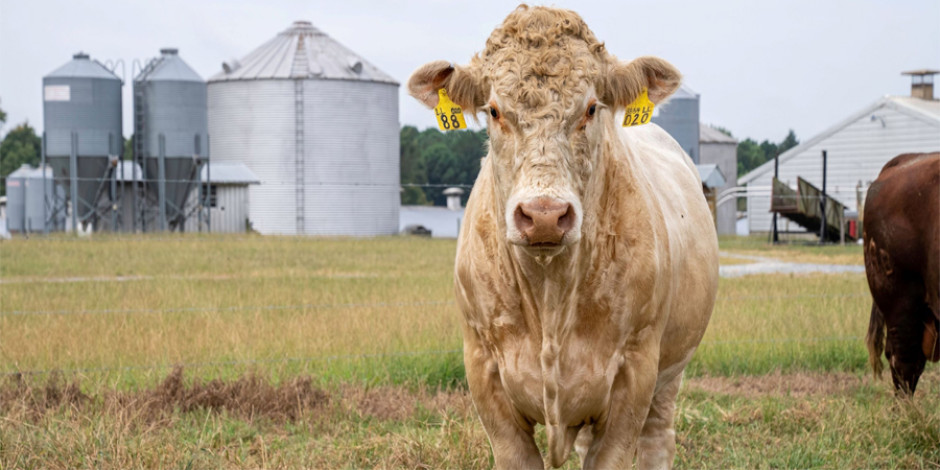
Photo: Collected
To bolster awareness of possible actions that can be taken, and support Members with a menu of solutions, the Food and Agriculture Organization of the United Nations (FAO) today (25/09/2023) published ”Methane emissions in livestock and rice systems. Sources, quantification, mitigation, and metrics”.
The report was put together by a multidisciplinary team composed of 54 international scientists and experts of the Livestock Environmental Assessment and Performance (LEAP) Partnership hosted at FAO since 2012. It offers a comprehensive overview and robust analysis of methane emissions in livestock and rice systems. It focuses on both the sources and sinks of methane gas, outlines how emissions can be measured, describes a broad sampling of mitigation strategies, and evaluates the kind of metrics that can be used to measure both emissions and their mitigation on the climate system.
“The results and recommendations of this report bolster the efforts of countries and stakeholders committed to reducing methane emissions and, in so doing, move us towards more efficient, inclusive, resilient, low-emission and sustainable agrifood systems,” said FAO Deputy Director-General Maria Helena Semedo in report’s foreword.
Methane accounts for about 20 percent of global greenhouse gas emissions and is more than 25 times as potent as carbon dioxide at trapping heat in the atmosphere.
Methane emissions from anthropogenic activities currently contribute about 0.5 degrees Celsius to observed global warming, making their reduction an important pathway to achieve the Paris Agreement. The report aims to help enable agrifood systems to contribute their share to the Global Methane Pledge, a non-binding initiative endorsed by more than 150 countries to decrease methane emissions by 30 percent from 2020 levels by 2030, which would avoid more than 0.2 degrees Celsius of average global temperature increase by 2050.
The work is strongly in line with the FAO Strategy on Climate Change and the Strategic Framework 2022-2031, both of which aspire to reduce greenhouse gas emissions through a holistic mix of better production, better nutrition, a better environment, and a better life – the Four Betters.
Besides agrifood systems, other human activities that generate methane emissions include landfills, oil and natural gas systems, coal mines, and more. About 32 percent of global anthropogenic methane emissions result from microbial processes that occur during the enteric fermentation of ruminant livestock and manure management systems, while another 8 percent comes from rice paddies.
Measurement issues
One of the trickiest issues with methane is how its emissions and inventories are measured, evidently a critical factor in determining the best mitigation pathways.
Precise methods have been developed, often involving placing animals in respiration chambers, but they are expensive, labor-intensive, and difficult to apply to grazing animals. Sophisticated use of drones and satellites has been deployed, but this approach entails much modeling and research is lagging behind in validating these methods, the publication notes.
Moreover, enteric methane emissions can vary substantially between animals of the same species, opening a role for genetic selection as well as dietary innovation in livestock feed.
Another key environmental factor is how local soils serve as a methane sink. Research summarized in the report indicates that upland forest soils are the most efficient at this, especially in temperate biomes, with storage rates four times as great as that of cropland, and that dry grazing lands have a notably higher uptake rate than moist grazing lands. Those findings could point to the merits of silvopastoral approaches such as that deployed in a Globally Important Agricultural Heritage System in Portugal.
More empirical data and systematic measurement standards will help craft better-tailored local mitigation approaches.
Mitigation issues
Research in the mitigation of enteric methane has grown exponentially, especially in the area of feed mixes, livestock breeding, and rumen manipulation.
The report discusses a host of currently available strategies, with a special focus on the opportunities and barriers to their implementation in confined and partial grazing production systems, as well as in extensive and fully grazing production systems. To sharpen the use value of the review, FAO assessed the strategies in terms of their impact on the reduction of methane production or emissions per animal product unit as well as in terms of safety aspects, interaction with other greenhouse gases, and other economic, regulatory, and societal issues on which successful implementation depends.
A similar analysis is done for rice paddy production systems, with an emphasis on bolstering buy-in at all levels of the supply chain so that the burden does not fall only on the primary producer.
Sustainable Livestock Transformation
In relation to the Global Conference on Sustainable Livestock Transformation hosted by FAO this week, the new publication raises a number of key points and offers useful recommendations.
The global ruminant population increased by almost twofold from 1960 to 2017, whereas that of non-ruminants increased by more than fourfold. Both are projected to grow further, with global demand for animal products projected to increase by up to 70 percent by 2050, thus exacerbating methane and greenhouse gas emissions from livestock systems.
By organizing the Conference and compiling the new report, FAO is helping chart the way that Members can develop low-emission and climate-resilient livestock systems allowing them to integrate commitments to reduce methane into their nationally determined contributions and climate policies – ultimately bolstering progress towards the Sustainable Development Goals.
Source:
Online/GFMM
Comment Now